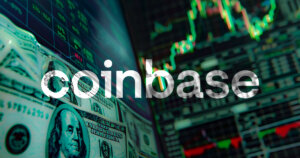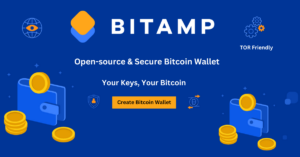 Op-ed: Why the USDC depeg is not a reason to panic
Op-ed: Why the USDC depeg is not a reason to panic Op-ed: Why the USDC depeg is not a reason to panic
We delve into the stability of USDC and analyze crucial factors and risks associated with it.

Cover art/illustration via CryptoSlate. Image includes combined content which may include AI-generated content.
The following is a guest post by Anndy Lian.
The crypto industry is currently experiencing anxiety due to concerns about the potential detachment of USDC, a stablecoin supported by US dollars. As an individual who closely monitors the market, I have been observing the situation and would like to share some of my personal views.
Firstly, It’s worth emphasizing that Silicon Valley Bank (SVB), responsible for holding the funds backing USDC, reportedly has enough assets to meet all withdrawal requests. According to the Federal Deposit Insurance Corporation (FDIC) reports as of December 31, 2022, SVB had approximately $209.0 billion in assets and about $175.4 billion in deposits. However, despite the impressive asset base, there are still concerns about the liquidity of SVB’s book and what percentage of a haircut would be expected if the bank were to experience significant losses.
This uncertainty stems from the fact that the bank’s underlying assets are not transparent, and there are no clear indications of how illiquid or risky these assets might be. As a result, there is a risk that if SVB’s assets experience significant losses or become illiquid, the bank may struggle to meet all of its obligations, potentially resulting in a depeg of USDC. This would significantly impact the broader crypto market, as USDC is widely used as a trading pair on various exchanges.
Secondly, another important aspect to consider regarding the stability of USDC is the financial backing provided by Circle, the company that issues the stablecoin. Circle holds 77% of their reserves in highly liquid instruments such as 1-4 month T-Bills, managed by Blackrock and held at BNY Mellon. This allocation of reserves provides significant security for USDC, as T-Bills are generally considered very safe and highly liquid investments.
The T-Bills held by Circle provide an absolute floor for USDC of around 0.77, meaning that even in the worst-case scenario, USDC should not depeg below this level. Furthermore, since T-Bills are highly liquid, they should be easily sold if Circle needs to raise funds quickly to meet unexpected obligations.
This provides additional protection for USDC and helps mitigate any potential risks associated with the stablecoin. It’s also worth noting that Circle’s retained earnings and interest income should theoretically be sufficient to cover any expected “losses” it may be exposed to from SVB. This means that even if SVB were to experience significant losses or become illiquid, Circle should be able to cover any potential losses without impacting the stability of USDC.
Thirdly, another point to consider when assessing the potential impact of a depeg of USDC is the maximum exposure of Circle. This company issues the stablecoin to Silicon Valley Bank (SVB), which holds the funds backing USDC. Experts estimate that Circle’s maximum exposure to SVB will be around $198 million, a relatively small percentage of the total funds backing USDC, which is approximately $3.3 billion.
While this may seem like a large sum, it’s important to note that Circle has significant financial reserves and should be able to absorb any potential losses without significantly impacting the stability of USDC. The crypto market as a whole has grown significantly over the past few years, with a current market capitalization of over $1 trillion. In this context, the potential loss of $198 million would represent a relatively small percentage of the overall market. It should not significantly impact investor confidence or the stability of the crypto market as a whole.
Fourthly, the relationship between Coinbase and Circle. Another factor that may reassure investors in USDC is the relationship between Coinbase and Circle. Coinbase, one of the largest crypto exchanges in the world, holds $4.4 billion on its balance sheet and is a 50-50 partner with Circle in the Centre Consortium, which oversees the technical aspects of USDC. Given its significant investment in USDC and its partnership with Circle, Coinbase has a vested interest in ensuring the stability of the stablecoin.
This may mean that Coinbase could provide additional support to Circle if needed, further strengthening the stability of USDC. Coinbase has a strong reputation in the crypto industry and has demonstrated a commitment to regulatory compliance and financial stability. As such, the involvement of Coinbase in the management of USDC may provide an additional layer of confidence for investors.
While there are concerns about the potential depeg of USDC, several possible scenarios could play out over the next week. One possibility is that Coinbase, as a partner in the Centre Consortium and a major investor in USDC, may provide additional support to Circle if needed. This could take the form of additional financial backing or other resources to help ensure the stability of USDC. Another possibility is that Circle may take on debt or credit facilities from BlackRock or other institutional lenders to help shore up its financial position.
This could provide additional liquidity and help to address any concerns about the stability of USDC. It’s also possible that the Federal Reserve may intervene to support Silicon Valley Bank (SVB), the bank that holds the funds backing USDC. While this may be seen as an unlikely scenario, it cannot be completely ruled out, given the potential impact of a destabilization of USDC on the broader financial system.
Several actions can be taken regarding risk management for investors who hold USDC. One option is to hedge USDC/USDT perpetual swaps by shorting USDC through centralized or decentralized exchanges (CeFi or DEX). This strategy can help offset potential losses if the value of USDC were to decline. Another strategy is to borrow USDC against USDT on lending protocols. However, this option may be limited due to the potential risks associated with USDC. Investors may also consider trading out of USDC and into USDT on CeFi exchanges at a rate of around 0.95 if they are concerned about the stability of USDC.
This can help to reduce exposure to any potential risks associated with USDC. It’s also important to note that investors should avoid sending USDC to Circle for redemption. While the risk of gated redemption is relatively low, there is still a potential risk of this occurring. As such, it’s recommended that investors hold USDC in a safe and secure wallet and take appropriate risk management measures to protect their investment.
In conclusion, investors must stay vigilant and informed during market volatility, such as the current unease in the crypto sector surrounding USDC. It’s important not to make impulsive decisions based on uncertainty or unpredictability but to remain composed and clear-headed. One way to stay informed is to follow updates and analyses from reliable sources, such as financial news outlets or industry experts.
It’s also important to understand one’s investment portfolio, including any potential risks or vulnerabilities. Taking a measured and calculated approach to investing can help mitigate potential losses and protect one’s assets. By remaining watchful and well-informed, investors can navigate market volatility and uncertainty with greater confidence and clarity.






 Farside Investors
Farside Investors 






































































































